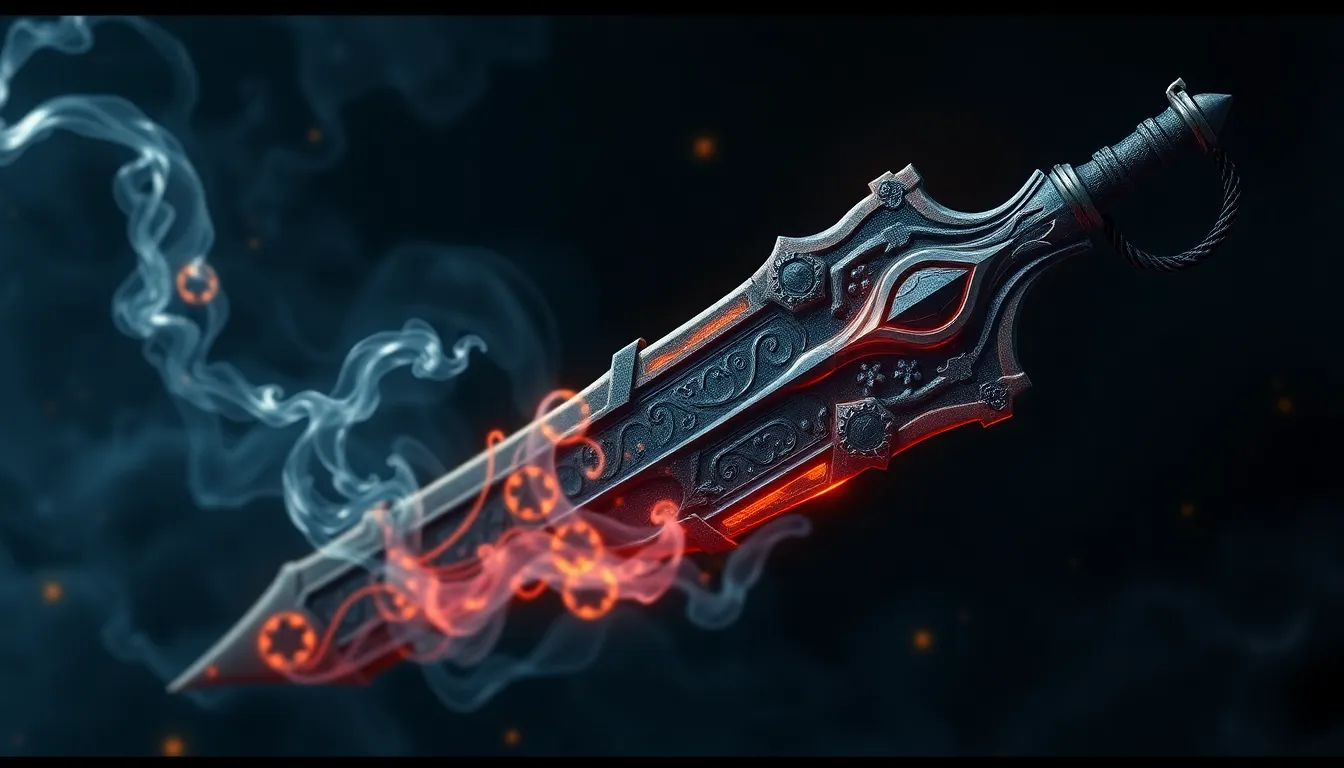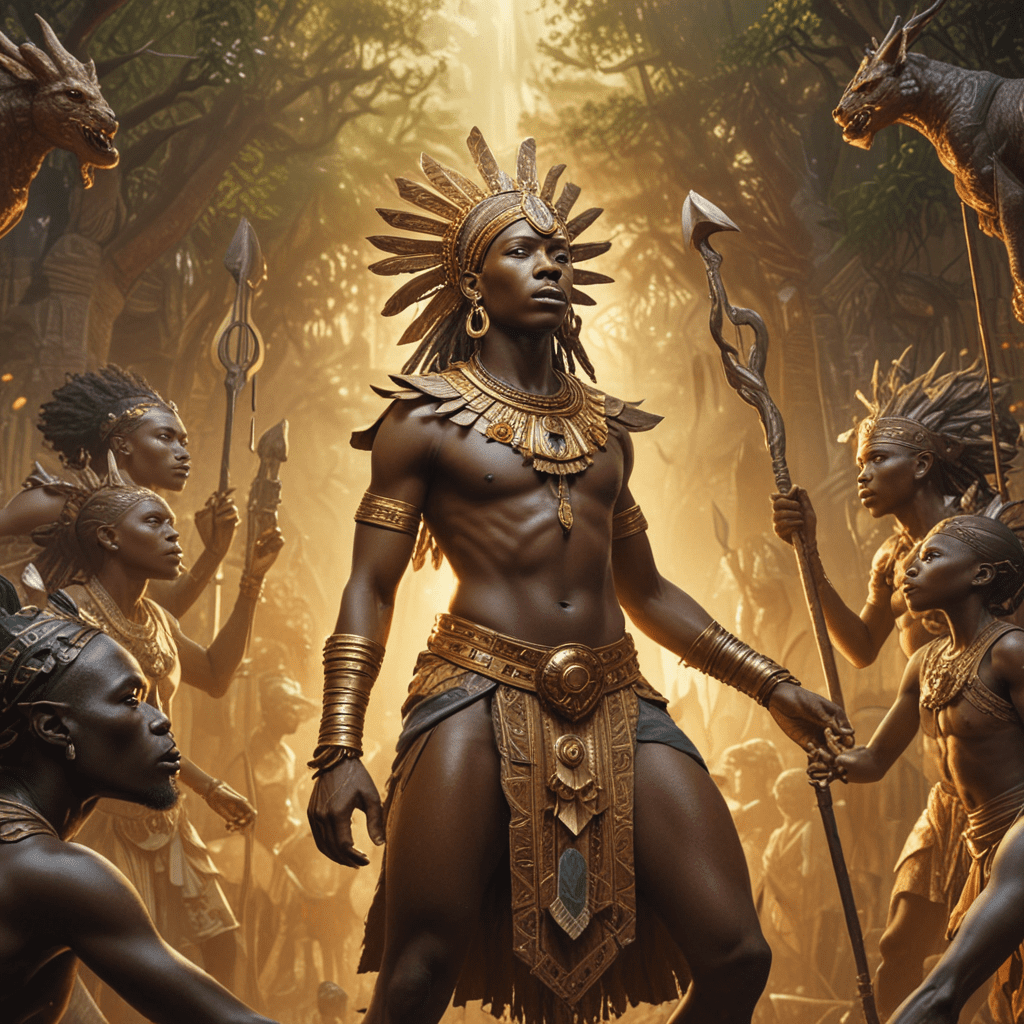Mythological Mayhem: The Most Intense Conflicts in Lore
I. Introduction to Mythological Conflicts
Mythology serves as a window into the beliefs, values, and fears of ancient cultures. It encompasses a collection of stories that explain the origins of the world, the nature of humanity, and the divine forces that govern existence. Conflicts within these mythologies often reflect the struggles of life, embodying the eternal battle between good and evil, chaos and order, and fate versus free will.
These narratives do not merely entertain; they teach moral lessons, provide social cohesion, and establish cultural identity. Through the lens of conflict, mythologies explore the complexities of human experience, offering insights into the psyche of civilizations.
This article aims to explore some of the most intense conflicts across various mythologies, examining their significance and impact on societies throughout history.
II. The Titanomachy: The Clash of Titans and Olympians
In Greek mythology, the Titanomachy represents a monumental conflict between the Titans, the elder gods, and the Olympians, led by Zeus. The Titans, offspring of Uranus (Sky) and Gaia (Earth), represented primal forces and were seen as embodiments of natural phenomena.
A. Background of the Titans in Greek Mythology
The Titans were a powerful race that ruled during the Golden Age. They included notable figures such as Cronus, Rhea, Oceanus, and Hyperion. Their reign, however, was challenged by the younger generation of gods, the Olympians, who sought to overthrow them.
B. Key Figures: Cronus, Zeus, and the Olympian Gods
Central to this conflict was Cronus, the leader of the Titans, who feared that one of his children would dethrone him. To prevent this, he swallowed each of his children at birth. However, Rhea, his wife, saved Zeus by hiding him on the island of Crete. When Zeus grew up, he led a rebellion against Cronus and the Titans, culminating in a ten-year war.
C. The Significance of the War in Shaping the Pantheon and the World
The Titanomachy resulted in the defeat of the Titans, who were cast into Tartarus, and the establishment of Zeus and the other Olympian gods as the new rulers of the cosmos. This conflict not only shaped the pantheon of Greek gods but also established themes of succession, power dynamics, and the triumph of order over chaos.
III. The Mahabharata: The Epic Struggle Between Cousins
The Mahabharata is one of the longest epic poems in the world and holds immense cultural significance in India. This epic narrates the story of the Kurukshetra War, a bitter conflict between two branches of a royal family, the Pandavas and the Kauravas.
A. Overview of the Mahabharata and Its Cultural Importance in India
The Mahabharata encompasses various themes, including duty (dharma), righteousness, and the complexities of human relationships. It is not merely a tale of war but also a discourse on ethics and morality.
B. The Kurukshetra War: Causes and Key Players
At the core of this conflict was a struggle for power and legitimacy. The Kauravas, led by Duryodhana, sought to usurp the throne from their cousins, the Pandavas, led by Yudhishthira. The war was marked by significant events, such as the Bhagavad Gita, where Krishna imparts spiritual wisdom to Arjuna on the battlefield.
C. Themes of Dharma (Duty) and Moral Ambiguity in the Conflict
The Mahabharata presents complex moral dilemmas, illustrating the concept of dharma. Characters often face choices that challenge their ethical beliefs, highlighting the ambiguity of right and wrong in the pursuit of justice.
IV. Ragnarok: The Norse End Times Battle
In Norse mythology, Ragnarok represents a series of events, including a great battle that leads to the death of multiple deities and the end of the world as it is known. This fateful conflict underscores the cyclical nature of existence in Norse lore.
A. Explanation of Ragnarok in Norse Mythology
Ragnarok is prophesied to be preceded by a series of natural disasters, leading to a great war between the gods (Aesir and Vanir) and their enemies, including giants and monsters. It is a culmination of conflicts that have been brewing throughout the mythological narrative.
B. Major Characters and Their Roles: Odin, Thor, Loki, Fenrir
Key figures in this battle include Odin, the Allfather; Thor, the god of thunder; Loki, the trickster god; and Fenrir, the monstrous wolf. Each character plays a critical role in the unfolding tragedy of Ragnarok.
C. The Cyclical Nature of Destruction and Rebirth in Norse Lore
Ragnarok is not merely an end but also a beginning. Following the destruction, it is believed that a new world will rise from the sea, populated by the surviving gods and righteous humans, emphasizing the themes of rebirth and renewal.
V. The War of the Gods: Egyptian Deities in Conflict
Egyptian mythology is rich with tales of gods and their struggles for power. One of the most significant conflicts involves the battle between Set and Osiris, which underscores the themes of chaos versus order.
A. Overview of the Ennead and Key Egyptian Gods
The Ennead consists of nine deities, including Atum, Shu, Tefnut, Geb, Nut, Osiris, Isis, Seth, and Nephthys. This group represents the creation and governing forces of the universe.
B. The Battle Between Set and Osiris: Motivations and Consequences
Set, the god of chaos, coveted the throne of Osiris, the god of the afterlife. In a fit of jealousy, Set murdered Osiris and dismembered his body, which led to a fierce struggle between Set and Osiris’s wife, Isis, who sought to resurrect her husband. This conflict resulted in a cosmic struggle between order and chaos.
C. The Concept of Chaos Versus Order in Egyptian Mythology
The narrative illustrates the eternal conflict between chaos, represented by Set, and order, represented by Osiris. This battle not only shaped the Egyptian understanding of life and death but also influenced their rituals and beliefs regarding the afterlife.
VI. The Siege of Troy: Divine Intervention and Human Tragedy
The Trojan War, a central narrative in Greek mythology, is a tale of love, betrayal, and divine intervention. It highlights the complexities of human emotions against the backdrop of a war fueled by both mortal and immortal beings.
A. Summary of the Trojan War in Greek Mythology
The war began when Paris, a Trojan prince, abducted Helen, the wife of Menelaus, king of Sparta. This act led to a coalition of Greek city-states launching a siege on Troy, lasting for ten years.
B. The Roles of Gods and Goddesses in the Conflict
The gods played significant roles in the war, taking sides and influencing events. For instance, Athena and Hera supported the Greeks, while Aphrodite sided with the Trojans. The divine interventions often complicated the conflicts faced by the mortal characters.
C. The Impact of the War on Greek Cultural Identity and Storytelling
The Trojan War left a profound impact on Greek literature, art, and cultural identity. It became a symbol of heroism, tragedy, and the consequences of pride, influencing countless works of art and literature throughout history.
VII. The Battle of the Fomorians and Tuatha Dé Danann
Irish mythology presents the conflict between the Fomorians, a race of supernatural beings, and the Tuatha Dé Danann, the god-like race of the Irish pantheon. This battle shaped the mythological landscape of Ireland.
A. Overview of Irish Mythology and Its Pantheon



